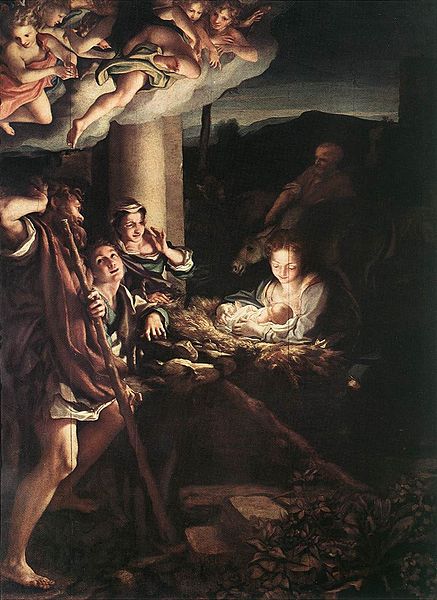The painting was commissioned by Alberto Pratoneri for the family chapel in the Basilica of San Prospero in Reggio Emilia and the beauty of the painting did not go unnoticed by Francesco I. In fact, in 1640 it became part of his collection and, replacing the original, he commissioned Jean Boulanger to paint a copy. Unfortunately, about one hundred years later, in 1746, the canvas was included among the 100 paintings sold by the Este family to Augustus III, King of Poland and Elector of Saxony, which are now in the collection of the Gemäldegalerie in Dresden.
Correggio’s painting ‘Adoration of the Shepherds’ is recognised as one of the most beautiful nocturnes in Italian painting and already at the time of Francesco I was placed in a privileged position in the gallery, placed in the last room and presented to guests by solemnly lifting the curtain covering it. Even in Dresden it was, for many decades, the most renowned work, surpassed in fame only by Raffaello’s ‘Sistine Madonna’.
The strength of this painting lies in the involvement it evokes in the viewer. A conventional and ordinary scene such as that of adoration finds in Correggio’s brush a new expression, a narrative power that is concentrated in Jesus who himself becomes light, called upon to illuminate the darkness. In fact, the illumination of the entire scene comes from the body of the Child, symbol of divine light, embraced in the arms of Mary, who casts a loving gaze upon him. The Mother is not bothered by the light emanating from her son; on the contrary, the woman next to her on the left is forced to shield her eyes. Vasari describes this scene as follows “…and among the many considerations made in this painting, there is a woman who, wanting to physically look at Christ, and so that her mortal eyes cannot suffer the light of His divinity, which seems to strike that figure with its rays, puts her hand in front of her eyes, so well expressed that it is a marvel. There is a choir of angels above the manger singing’. Beside the manger, in addition to the woman with the basket of birds, an old man and a young shepherd accompanied by a large dog have come to pay homage to the Saviour, as have the five jubilant angels looking out from the dense cloud above them. Behind the Virgin, barely illuminated, is Saint Joseph with his donkey and two angels feeding the ox. In the background are gentle hills while the sun rises on the horizon. The representation takes place, as is traditional, inside an animal shelter, a place as humble and simple as the manger on which Christ is laid. The painter inserts a mighty column into the scene, a symbolic element of strength and solidity, on which the divine light shines, making the shaft emerge from the darkness of the night. In the foreground is painted a dense clump of wild grasses, whose leaves shimmer with golden highlights.







